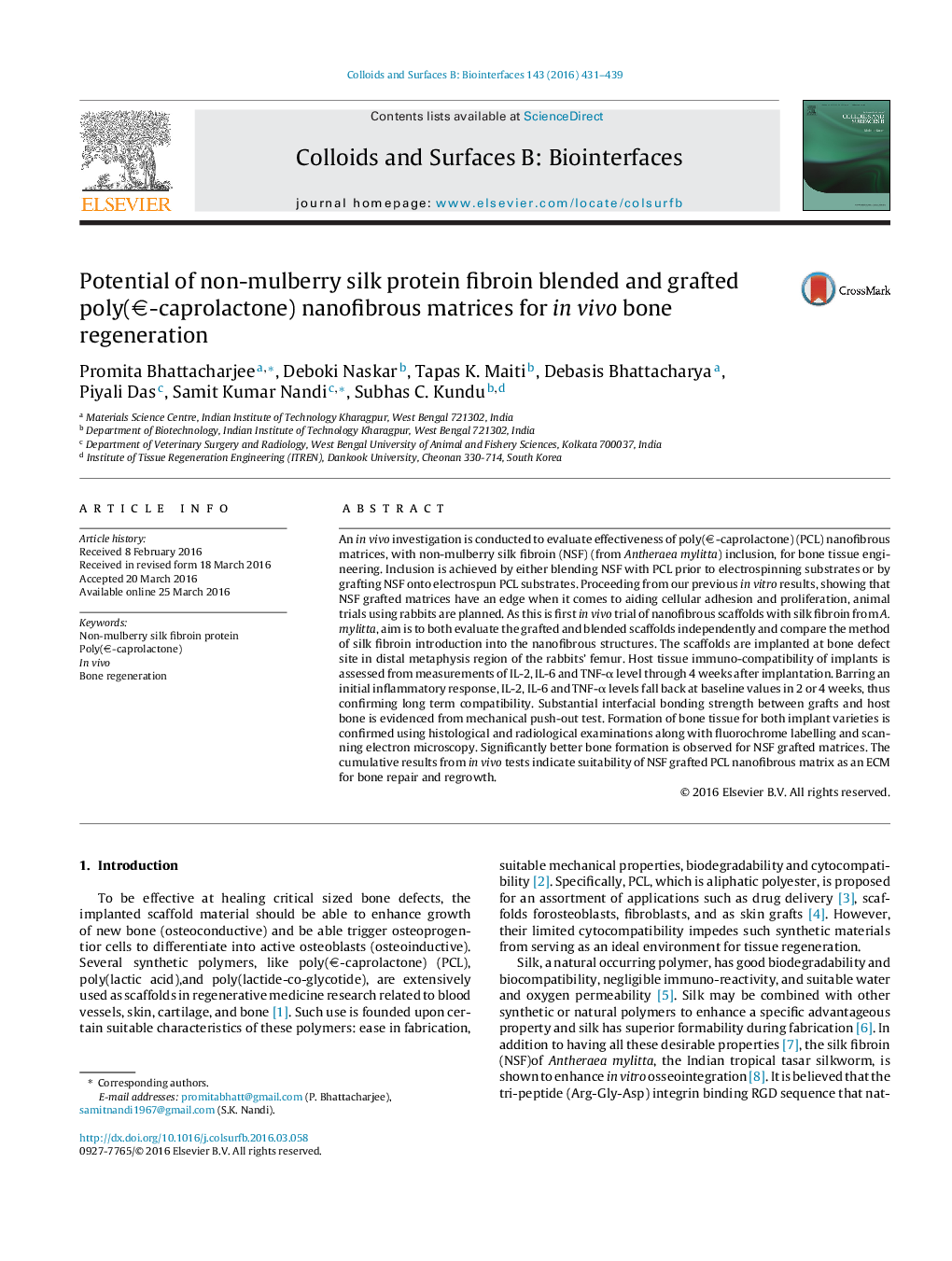| کد مقاله | کد نشریه | سال انتشار | مقاله انگلیسی | نسخه تمام متن |
|---|---|---|---|---|
| 599066 | 1454261 | 2016 | 9 صفحه PDF | دانلود رایگان |

• Silk fibroin from Antheraea mylitta was included in nanofibrous PCL matrices.
• Inclusion was carried out either by grafting or by blending the fibroin.
• A detail in vivo comparative study was carried out between two types of matrices.
• Fibroin grafted matrices were comparatively more suitable ECM in terms of enhanced bone regeneration.
An in vivo investigation is conducted to evaluate effectiveness of poly(Є-caprolactone) (PCL) nanofibrous matrices, with non-mulberry silk fibroin (NSF) (from Antheraea mylitta) inclusion, for bone tissue engineering. Inclusion is achieved by either blending NSF with PCL prior to electrospinning substrates or by grafting NSF onto electrospun PCL substrates. Proceeding from our previous in vitro results, showing that NSF grafted matrices have an edge when it comes to aiding cellular adhesion and proliferation, animal trials using rabbits are planned. As this is first in vivo trial of nanofibrous scaffolds with silk fibroin from A. mylitta, aim is to both evaluate the grafted and blended scaffolds independently and compare the method of silk fibroin introduction into the nanofibrous structures. The scaffolds are implanted at bone defect site in distal metaphysis region of the rabbits’ femur. Host tissue immuno-compatibility of implants is assessed from measurements of IL-2, IL-6 and TNF-α level through 4 weeks after implantation. Barring an initial inflammatory response, IL-2, IL-6 and TNF-α levels fall back at baseline values in 2 or 4 weeks, thus confirming long term compatibility. Substantial interfacial bonding strength between grafts and host bone is evidenced from mechanical push-out test. Formation of bone tissue for both implant varieties is confirmed using histological and radiological examinations along with fluorochrome labelling and scanning electron microscopy. Significantly better bone formation is observed for NSF grafted matrices. The cumulative results from in vivo tests indicate suitability of NSF grafted PCL nanofibrous matrix as an ECM for bone repair and regrowth.
Figure optionsDownload as PowerPoint slide
Journal: Colloids and Surfaces B: Biointerfaces - Volume 143, 1 July 2016, Pages 431–439